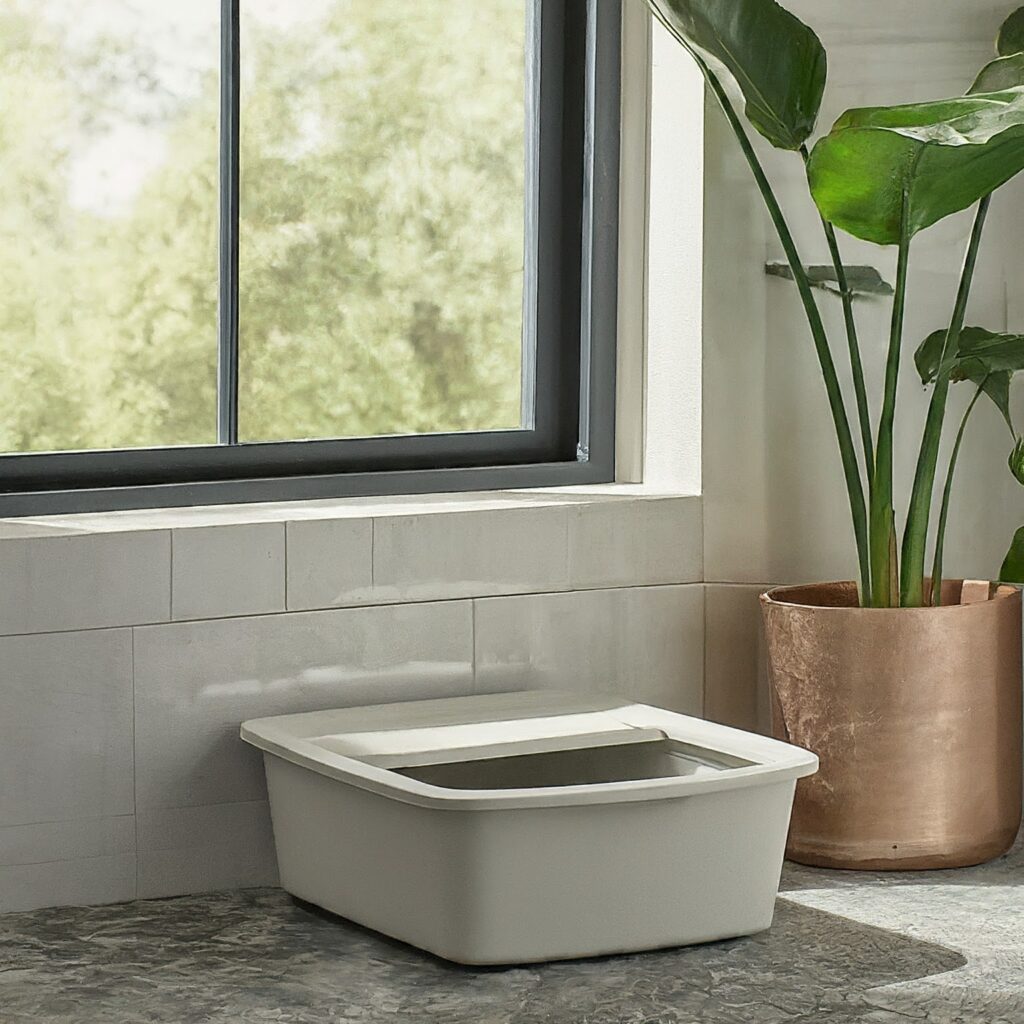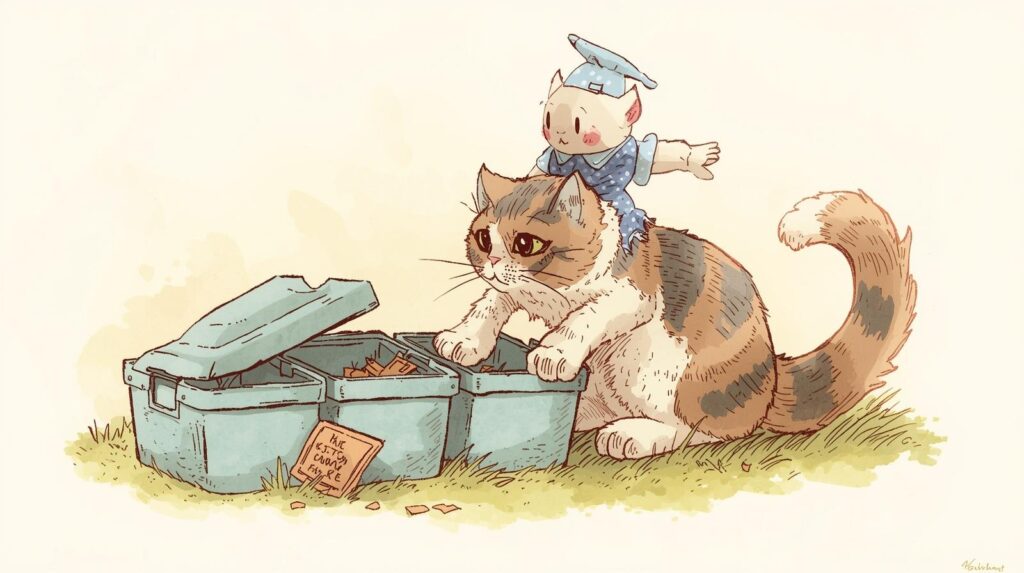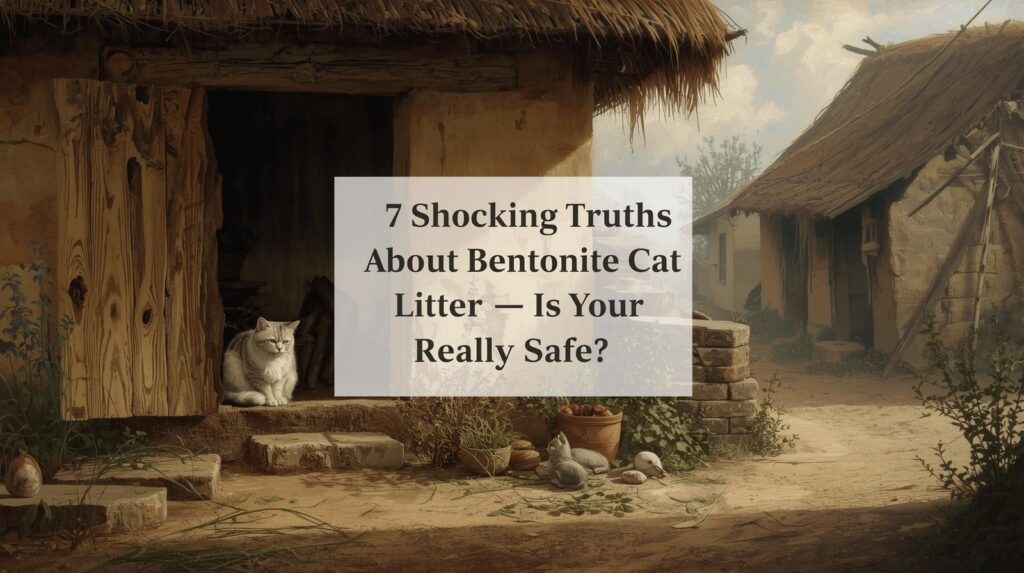
Have you ever wondered what’s really inside your cat’s litter box? Most cat parents use Bentonite Cat Litter every day — trusting it to keep their homes clean and odor-free. But what if the very litter you rely on might not be as safe as it seems? While Bentonite clay litter is known for its strong clumping ability, odor control, and easy cleaning, few cat owners realise the hidden risks it can pose — especially for kittens, senior cats, or cats with respiratory sensitivities. From dust inhalation to ingestion hazards and environmental impact, there’s more to this popular litter than meets the eye.
In this guide, we’ll uncover 7 shocking truths about Bentonite Cat Litter that every cat parent should know. You’ll also discover vet-approved alternatives, safe cleaning practices, and simple ways to keep your furry friend happy, healthy, and protected — without giving up convenience.
I write with love and care, keeping your furry friend’s health first and following the doctor’s guidance. If it helps, share it—because health and knowledge grow stronger when we share them within our community. My words are carved in stone — I truly worship my cat. Everything I share with you here comes straight from my cat’s own wisdom. That’s why I encourage you to share this blog as much as possible! Also, let me tell you — this is a top-quality blog, so make sure to read it completely to get the most benefit and keep your cats happy and healthy. A cat is the light that brightens every home.
Table of Contents
What is bentonite litter?
Bentonite cat litter is made from bentonite clay, a naturally occurring absorbent clay mineral formed from volcanic ash and water. This type of cat litter is renowned for its ability to quickly clump when it comes into contact with moisture, making it easier to clean and maintain litter boxes. Bentonite clay undergoes a process of drying, crushing, and granulating to produce fine particles suitable for cat litter.
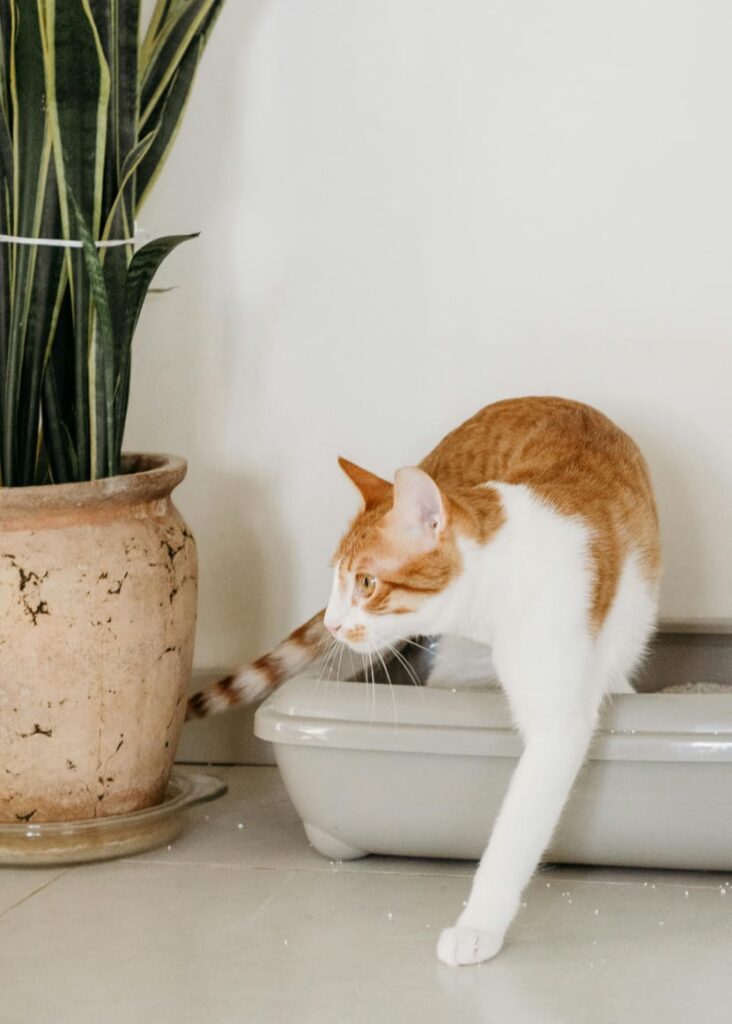
How Does Bentonite Cat Litter Work?
Bentonite clay has a unique composition that allows it to absorb liquids effectively. When a cat urinates in the litter box, the bentonite clay quickly forms tight clumps around the moisture, trapping both the urine and its odor within the clumps. This makes it easier for pet owners to scoop out the soiled litter while leaving clean litter for the cat to use. Additionally, bentonite litter helps control odors, keeping the litter box fresher for longer periods between cleanings.
Key Features of Bentonite Cat Litter:
Here are some features that make bentonite cat litter different from other cat litter
1: Excellent Clumping Ability:
Bentonite cat litter forms firm and solid clumps when wet, allowing for easier scooping of dirty litter without disturbing the clean litter in the box.
2: The Importance of Absorption
This stuff is a turnaround for us cat owners. It’s made from natural bentonite clay, and let me tell you, it’s like a sponge for moisture. As soon as your kitty does its business, this litter clumps it up fast. No more dealing with soggy, stinky messes. Bentonite Cat Litter keeps your cat’s bathroom area clean and fresh without you breaking a sweat.
3.Odor Control
We all know how unpleasant they can be, right? But lucky for us, Bentonite Cat Litter is here to save the day. This stuff is like a superhero when it comes to odor control. It’s super effective at removing those unpleasant smells, leaving your home smelling fresh and clean. So whether you’ve got just one kitty or a whole bunch of them, Bentonite Cat Litter is your secret weapon for maintaining a pleasant environment for you and your cats.
4. Natural Ingredients, Safe for Your Cat
When it comes to your cat’s health and safety, nothing is more important. That’s why Bentonite Cat Litter is made from natural ingredients, free from harmful chemicals or additives. You can rest easy knowing that you’re providing your cat with a safe and hygienic litter box environment.
5. Cost-Effective Solution
Save money without compromising on quality! Bentonite cat litter is an affordable option that offers superior performance. With its long-lasting clumping power, you’ll use less litter and save more in the long run.
How do I use bentonite litter?
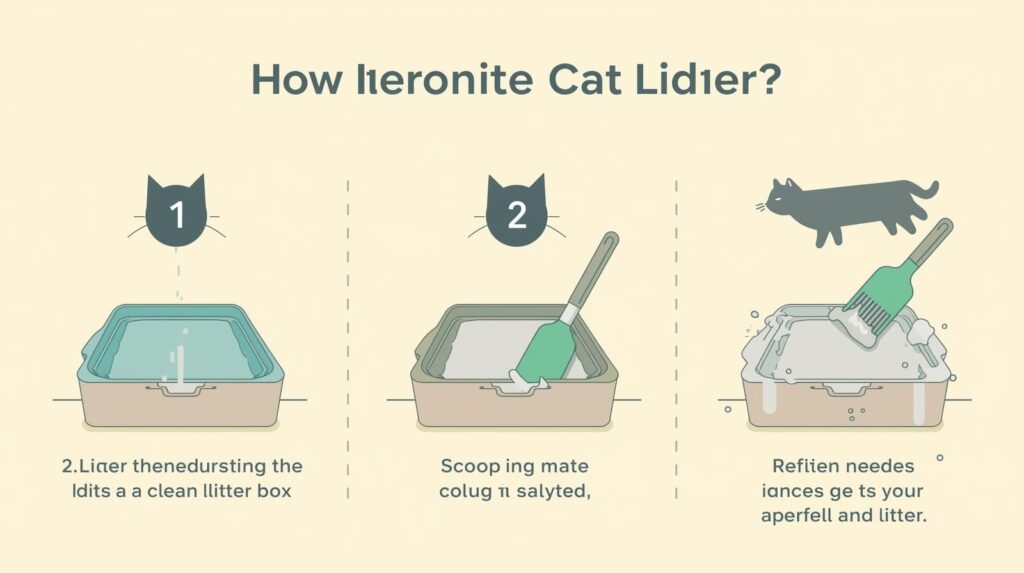
Using bentonite cat litter is straightforward, but here’s a step-by-step guide to ensure proper usage:
- Choose the Right Litter Box: Select a litter box that is large enough for your cat to comfortably move around in. Consider the size and preferences of your cat when choosing between open or covered litter boxes.
- Fill the Litter Box: Pour a sufficient amount of bentonite litter into the litter box, ensuring a depth of at least 2-3 inches. The exact amount needed will depend on the size of the litter box and the number of cats using it.
- Maintain the Litter Level: Regularly monitor the level of litter in the box and add more as needed to maintain the recommended depth. Scoop out any clumps and soiled litter daily to keep the box clean and odor-free.
- Scoop Soiled Litter: Use a scoop designed for clumping litter to remove soiled litter and clumps from the box. Start by scooping out solid waste and then focus on removing clumps of urine-soaked litter. Dispose of the scooped litter in a trash bag or designated waste bin.
- Replace as Needed: Completely replace the litter in the box once a month or as needed to maintain freshness and hygiene. Empty the litter box, clean it with mild soap and water, and refill it with fresh bentonite litter.
- Monitor Your Cat’s Behavior: Pay attention to your cat’s behavior and litter box habits. If your cat shows signs of discomfort or avoids using the litter box, it may indicate a preference for a different type of litter or an underlying health issue that requires attention.
Safety Tips for Bentonite Cat Litter
While Bentonite cat litter is generally safe for cats, it’s essential to follow proper usage guidelines to prevent any potential health risks. Always keep the litter box clean by scooping waste daily and replacing the litter regularly. Avoid placing the litter box near your cat’s food and water bowls to prevent contamination. Additionally, monitor your cat for any signs of discomfort or allergies, and consult your veterinarian if you have any concerns.
Here are some essential tips for using Bentonite Cat Litter.
1. Proper Handling and Storage
Handle Bentonite Cat Litter with care, and always store it in a cool, dry place away from moisture and direct sunlight. This helps maintain its effectiveness and prevents clumping before use.
2. Avoid Inhalation
While Bentonite cat litter is generally safe, avoid inhaling excessive dust when pouring or scooping. Consider wearing a mask or using low-dust formulas to minimise respiratory irritation for both you and your cat.
3. Monitor for Allergies
Keep an eye on your cat for any signs of allergies or discomfort when transitioning to Bentonite Cat Litter. If you notice any abnormal behaviour or symptoms, consult your veterinarian for guidance.
4. Keep Away from Food and Water
Place the litter box away from your cat’s food and water bowls to prevent contamination. This helps maintain a hygienic environment and reduces the risk of digestive issues.
5. Regular Cleaning and Maintenance
Scoop the litter box daily and replace the litter as needed to prevent odor buildup and bacterial growth. A clean litter box is essential for your cat’s health and well-being
What are the disadvantages of bentonite cat litter?
While Bentonite Cat Litter offers many advantages, there are also some potential disadvantages to consider:
- Dustiness: Some bentonite litters can produce dust when poured or disturbed, which may cause respiratory irritation for both cats and their owners, especially those with allergies or sensitivities.
- Tracking: Due to its fine granules, bentonite litter can be easily tracked outside the litter box by cats, leading to litter scattered around the house. This may require more frequent cleaning to maintain cleanliness.
- Weight: Bentonite litter can be heavier than other types of litter, especially when wet with urine. This may make it more challenging to carry and dispose of when cleaning out the litter box
How do you dispose of bentonite litter?
To dispose of bentonite cat litter, scoop out soiled litter and clumps using a scoop designed for clumping litter. Place the scooped litter into a securely tied trash bag or designated waste bin. Avoid flushing bentonite litter down the toilet, as it can potentially clog plumbing and sewage systems. If using biodegradable bentonite litter, check local regulations for composting or disposal options. Always follow manufacturer recommendations and local waste management guidelines for proper disposal to minimize environmental impact and maintain cleanliness in your home. Remember, proper disposal of cat litter is necessary to maintain your cat’s health and to keep your home clean.
Vet-Approved Products (Safe Picks for Cat Parents)
1. Dr Elsey’s Precious Cat Ultra Clumping Clay Litter
Why vets like it:
- Made from 100% sodium bentonite, providing excellent clumping and odor control.
- Low-dust formula helps protect your cat’s respiratory health.
- Suitable for multi-cat homes.
Best for: Cat owners who prefer the convenience of bentonite but want a dust-minimised option.
2. ökocat Natural Wood Cat Litter
Why vets recommend it:
- Free from chemicals, dyes, and synthetic fragrances.
- Plant-based fibres naturally absorb moisture and trap odors.
- Biodegradable and compostable, making it an eco-friendly alternative to Bentonite Cat Litter.
Best for: Environment-conscious cat parents and cats with sensitive paws or allergies.
3. Boxiecat Premium Clumping Clay Litter
Why it’s approved:
- Uses low-dust bentonite clay that’s safe for cats and owners.
- Creates hard, flat clumps that are easy to scoop.
- Formulated with natural probiotics for odor control.
Best for: Multi-cat households that need reliable clumping and hygiene.
4. World’s Best Cat Litter (Corn-Based)
Why vets approve:
- Made from whole-kernel corn—safe, lightweight, and flushable in most systems.
- No silica dust, making it safer for asthmatic or sensitive cats.
- Controls odor naturally without perfumes.
Best for: Cat parents seeking a biodegradable, plant-based alternative.
5. Fresh Step Advanced Simply Unscented Clay Litter
Why vets like it:
Approved by veterinarians for being gentle on paws and safe for daily use.
Best for: Pet owners who want strong odor control without harsh chemicals.
Uses activated charcoal for superior odor absorption.
Unscented, making it safer for cats sensitive to artificial fragrances.
6. Purina Tidy Cats Free & Clean Unscented Clumping Litter
Why it’s recommended:
- Made with odor-absorbing charcoal and ammonia blockers.
- Free from fragrances and dyes.
- Keeps litter boxes fresh longer with minimal tracking.
Best for: Cat owners who need a budget-friendly yet vet-approved clay litter.
7. Naturally Fresh Walnut-Based Cat Litter
Vet-approved benefits:
- Made from natural walnut shells, rich in odor-absorbing oils.
- Non-toxic and biodegradable.
- Safe for cats with respiratory sensitivities and picky grooming habits.
Best for: Homes wanting a natural, non-bentonite alternative with strong odor control.
Vet Tip:
If you decide to switch from Bentonite Cat Litter to a new formula, do it gradually over 7–10 days. Mix a small amount of the new litter with the old one and slowly increase the ratio. This helps your cat adjust comfortably and prevents litter box avoidance.
Further readings
Why Is My Cat Peeing Outside the Litter Box?
FAQs- Bentonite Cat Litter
What is Bentonite Cat Litter and how does it work?
Bentonite Cat Litter is made from natural volcanic clay that swells and clumps tightly when it comes in contact with moisture. This clumping action makes it easy to scoop out waste and maintain a clean litter box. The clay’s high absorbency helps trap urine and lock in odor, keeping your home fresh. However, because it’s not biodegradable, it’s less eco-friendly compared to plant-based or biodegradable cat litters.
Why do most cat owners choose Bentonite Cat Litter?
Most cat parents prefer Bentonite Cat Litter for its strong clumping ability, long-lasting odor control, and easy cleaning. It also offers a texture that feels natural to cats, making litter box training easier. The downside? It can create dust particles that may affect cats with respiratory sensitivities.
How safe is Bentonite Cat Litter for kittens and senior cats?
For kittens and older cats, Bentonite Cat Litter may pose some risks. If ingested during grooming, it can expand in the digestive system, causing discomfort or blockage. Vets often recommend non-clumping or natural alternatives like paper pellets, tofu litter, or corn-based cat litter for young and senior cats.
What happens if a cat accidentally eats Bentonite Cat Litter?
If your cat ingests a small amount of Bentonite Cat Litter, it usually passes without issue. But if larger quantities are swallowed, the clumping clay may harden inside the intestines. Watch for signs like vomiting, loss of appetite, or constipation, and contact your veterinarian immediately.
How often should I change Bentonite Cat Litter completely?
Ideally, replace Bentonite Cat Litter every 2–3 weeks, depending on the number of cats. Scooping daily keeps the box hygienic and prevents ammonia odor buildup. Adding a litter deodoriser or activated charcoal can also help extend freshness between full changes.
When should I switch from Bentonite to another type of cat litter?
Consider switching if your cat shows signs of sneezing, coughing, or avoiding the litter box—these could be reactions to dust or scent additives. Try dust-free, biodegradable, or plant-based cat litter alternatives for better safety and comfort.
Why does Bentonite Cat Litter create so much dust?
Dust forms when Bentonite clay particles break down from handling, pouring, or digging. Lower-quality brands often skip dust-removal processing. To minimise this, choose premium, low-dust bentonite litter and pour it gently into the box.
How does Bentonite Cat Litter compare to silica gel or tofu litter?
Bentonite Cat Litter clumps quickly and controls odor well, but it’s heavier and non-biodegradable. Silica gel litter is lightweight and absorbs odor through crystals, but can be pricey. Tofu litter is eco-friendly, flushable, and soft on paws — great for sensitive cats.
What are the main pros and cons of Bentonite Cat Litter?
Pros: Excellent clumping, superior odor control, and easy cleanup.
Cons: Creates dust, is non-biodegradable, heavy, and risky if ingested.
Vets suggest balancing convenience with safety, especially for multi-cat homes.
How can I dispose of Bentonite Cat Litter safely?
Never flush Bentonite Cat Litter down the toilet—it can clog plumbing. Instead, double-bag it in biodegradable liners and dispose of it with regular trash. Some regions offer eco-friendly cat litter disposal options, so always check local waste guidelines.
Where is Bentonite Cat Litter commonly made?
Most Bentonite Cat Litter comes from Wyoming (USA), India, and China, where sodium bentonite clay deposits are rich. The quality depends on processing, purity, and dust filtration methods used by each manufacturer.
How can I reduce odor in Bentonite Cat Litter naturally?
Mix a bit of baking soda or use activated charcoal pellets. Clean the box daily and maintain good ventilation. Some cat parents add a layer of odor-neutralizing pellets to enhance freshness without using chemicals.
Why is Bentonite Cat Litter bad for the environment?
The mining and production of Bentonite clay contribute to soil disruption and carbon emissions. Since it’s non-biodegradable, it ends up in landfills. Switching to eco-friendly cat litter alternatives like coconut husk or recycled paper helps reduce environmental impact.
Who should avoid using Bentonite Cat Litter?
Avoid it if your cat has asthma, allergies, or chronic respiratory issues. The fine dust can worsen symptoms. Also, kittens and cats with digestive sensitivities should use non-clumping, natural litters instead.
How do I transition my cat from Bentonite to a new litter?
Start by mixing 25% new litter with 75% Bentonite for a few days. Gradually increase the ratio over 7–10 days until your cat adjusts fully. Place the box in the same location, and keep the texture similar to avoid rejection.
Wrap-Up: Is Bentonite Cat Litter the Right Choice for You?
When it comes to your cat’s comfort and hygiene, choosing the right litter makes all the difference. Bentonite Cat Litter offers powerful clumping ability, odor control, and easy cleaning, which makes it a favourite among cat parents. However, as we discussed, it’s essential to be aware of its dust levels, tracking issues, and potential respiratory risks — especially for sensitive cats or kittens.
If you prefer low-maintenance litter, bentonite is great. But if your cat has allergies or you want an eco-friendly option, try mixing it with natural alternatives like tofu, corn, or wood-based litter.
Final Tip: Always monitor your cat’s reaction when switching litter. Each cat is different, and the best litter is the one that keeps both your cat and your home happy and healthy.
3 Quick Tips to Keep Litter Time Stress-Free
- Scoop Daily – Keeps your cat’s litter box fresh and odor-free.
- Use a Mat – Reduces tracking and keeps your floor clean.
- Ventilate the Area – Helps manage dust and maintains a healthy space.
I write with love and care, keeping your furry friend’s health first and following the doctor’s guidance. If it helps, share it—because health and knowledge grow stronger when we share them within our community. My words are carved in stone — I truly worship my cat. Everything I share with you here comes straight from my cat’s own wisdom. That’s why I encourage you to share this blog as much as possible! Also, let me tell you — this is a top-quality blog, so make sure to read it completely to get the most benefit and keep your cats happy and healthy. A cat is the light that brightens every home.

